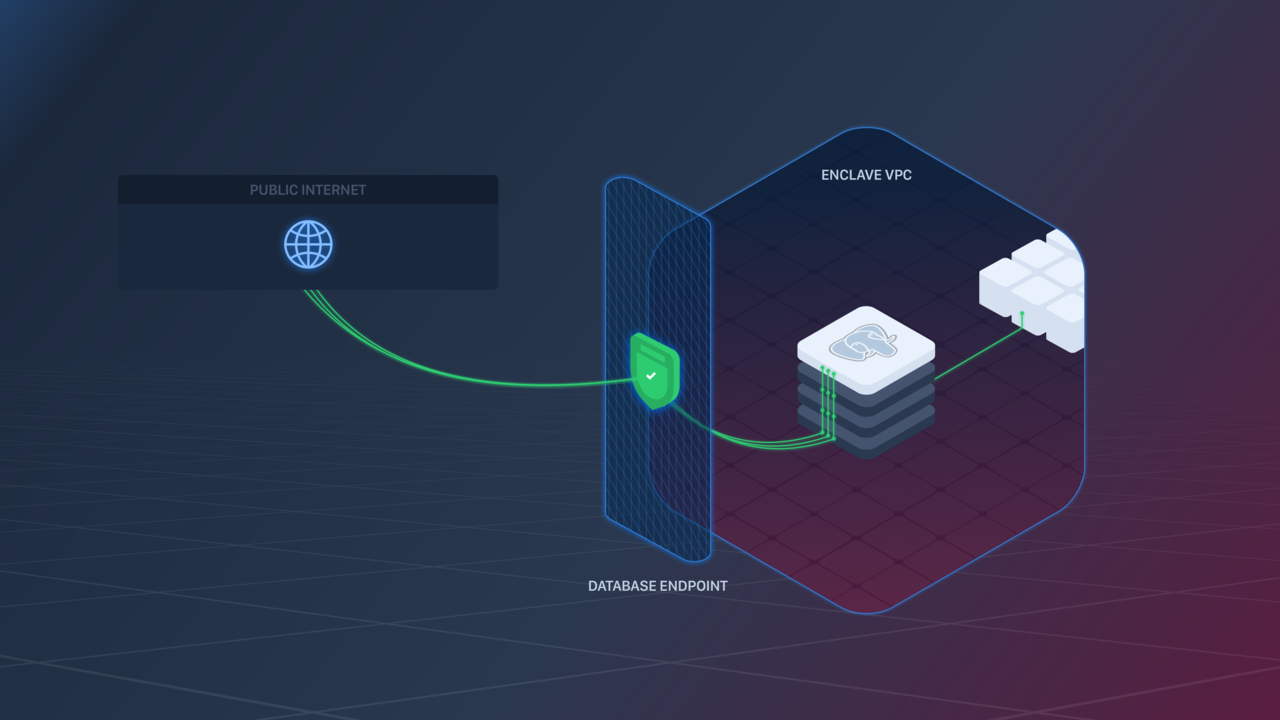
The underlying AWS hardware that backs Database Endpoints has an idle connection timeout of 60 minutes. If clients need the connection to remain open longer they can work around this by periodically sending data over the connection (i.e., a “heartbeat”) in order to keep it active.
Creating a Database Endpoint
Creating a Database Endpoint
A Database Endpoint can be created in the following ways:
- Within the Aptible Dashboard by navigating to the respective Environment >selecting the respective Database > selecting the “Endpoints” tab > selecting “Create Endpoint”
- Using the
aptible endpoints:database:createcommand - Using the Aptible Terraform Provider
IP Filtering

To keep your data safe, it’s highly recommended to enable IP filtering on Database Endpoints. If you do not enable filtering, your Database will be left open to the entire public internet, and it may be subject to potentially malicious traffic.
Configuring IP Filtering
Configuring IP Filtering
IP Filtering can be configured in the following ways:
- Via the Aptible Dashboard when creating an Endpoint
- By navigating to the Aptible Dashboard > selecting the respective Database > selecting the “Endpoints” tab > selecting “Edit”
Certificate Validation
Not all Database clients will validate a Database server certificate by default.
aptible environment:ca_cert command in order to perform validation. After the Endpoint has been provisioned, the Database will also need to be restarted in order to update the Database’s certificate to include the Endpoint’s hostname. See the Database Encryption in Transit page for more details.
If the remote service is not able to validate your database certificate, please contact support for assistance.
Least Privileged Access
The provided Database Credential has the full set of privileges needed to administer your Database, and we recommend that you do not provide this user/password to any external services.
Create a unique user for each external integration. Not only will this making auditing access easier, it will also allow you to rotate just the affected user’s password in the unfortunate event of credentials being leaked by a third party

